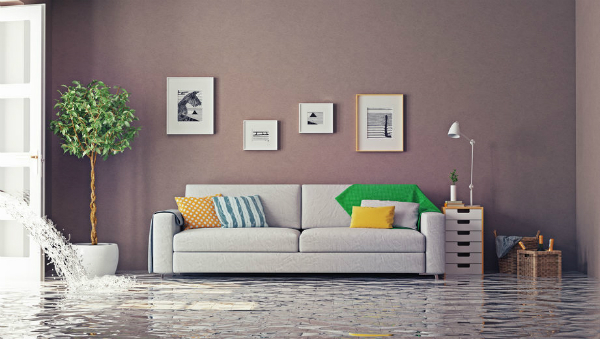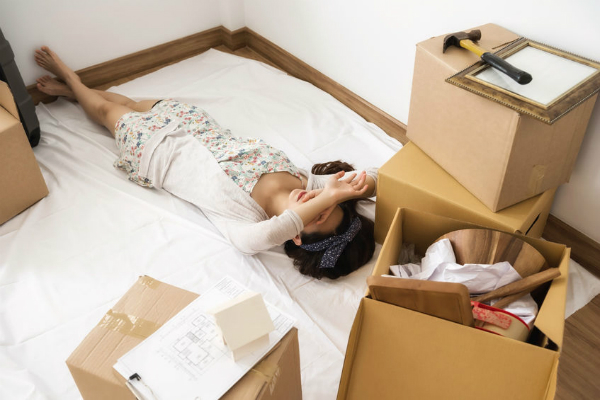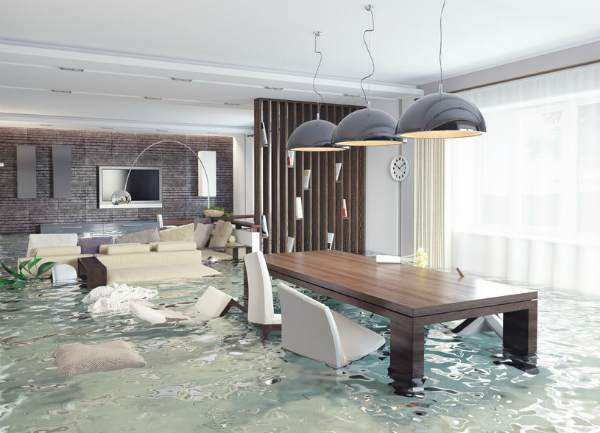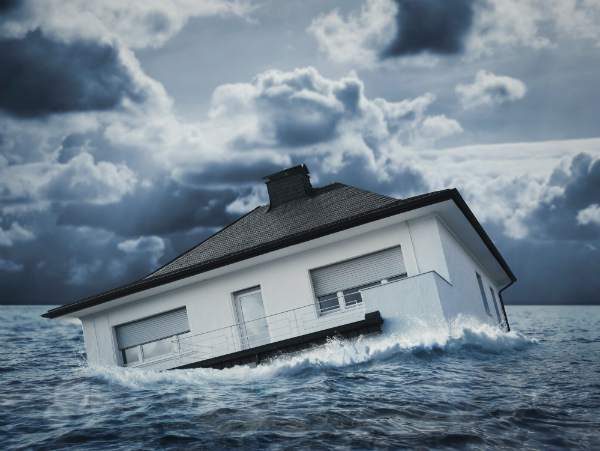We’ve heard of huge potholes appearing in downtown KL and flash floods occurring all over Malaysia, creating a real worry that it might just happen right at our doorsteps!
Even if your home is built on high ground or if you live in a strata property like a condominium where it’s rather unlikely for a flood to hit your living room, you can never be too careful – even burst pipes could be the cause!
To prevent you and your home from turning into a victim of unfortunate circumstances, here are some quick tips on what you should do for disaster management if your home becomes a murky swimming pool in a flash.
Step 1: Grab Everything & Run!
As soon as you notice water seeping into your home, quickly stack valuable items on higher ground, like upstairs or on tables and chairs to keep them dry and minimise damage.
Switch off all main electricity sources and valves – water is a powerful conductor and you wouldn’t want anything DEADLY to happen!
Flood waters can hit you faster than you know, so if the water level rises with no sign of stopping at all, pack up your important belongings, family members (even pets), and seek safe shelter immediately.
But before that, don’t forget to…
Step 2: Take Plenty Of Pictures As Evidence
We don’t mean peace-sign selfies of yourself standing knee-deep in water to post on social media, but clear photographic evidence of what the flood has done to your property and belongings.
These pictures will help a lot when you’re claiming for insurance as it provides solid evidence that your home did experience damage caused by flooding.
Avoid taking pictures only after the water has subsided, or after repairing any damages caused by the flood, as it may decrease the coverage you’re entitled to.
Step 3: Call Your Insurance Company
As stated, you’ll need as many pictures of damages from the flood to present to your insurance company, for them to process your claims.
Contact your insurance agent immediately, or the headquarters to sort it out.
Unless your home is covered by an existing specific coverage, you’ll need to work closely with them to identify the cause and exactly how much you’re entitled to.
Ensure you carefully document all the damages caused by the flood, and follow their instructions closely with regards to a property inspection to carry out repairs.
Step 4: How About My Home Loan?
If you’re unable to fulfil your monthly home loan payments because of the disaster, ask your loan officer/bank if they’re able to offer a mortgage forbearance.
A mortgage forbearance basically allows you to pause payments for a certain period of time as agreed by both parties.
This gives you a little bit more time to put repayments out of your mind, while you focus on what’s more urgent: making your home a safe and habitable place again!
Do not stop payments without informing the relevant authorities beforehand. You might be charged a late fee, and it’ll affect your credit score and any loans you might apply for in the future.
Step 5: Are You Living In A Disaster Area?
Once the government declares a location as a ‘Disaster Area’, you’ll have better access to resources and services that’ll help you get back on your feet, including financial assistance.
Some of the Malaysian governmental agencies involved in flood and disaster management are the following:
- National Security Council (NSC)
- Fire and Rescue Department
- Civil Defence Department
- Welfare Department
- Department of Irrigation and Drainage
- Meteorology Department
Step 6: Homebound Or No?
So the flood waters have receded and it’s been declared safe for you to return home. Depending on the severity of the flood, there are only 2 post-flood scenarios:
- Can you still live there after repairs, or
- The house is totally destroyed and can’t be salvaged anymore.
Scenario 1: Safe to live

After confirming with your insurance company and getting the green light to drain all the water, time for you to proceed with caution.
Wear waterproof gear and heavy duty gloves when cleaning out your home and debris, dispose of any food that’s been contaminated, as well as use only boiled drinking water for the time being.
Another downside from being affected by the flood is that your furniture and fittings might contract mould. This includes everything from loose items to the walls and floors of your home.
You can lessen mould damage by removing wet contents immediately, or control its growth by cleaning the items with anti-mould solution. Open doors and windows to allow fresh air in too.
Photograph in detail everything that’s been damaged by the flood, even your curtains and rugs. If you choose to dispose of them, talk it out with your insurer first to see if it’ll affect your coverage.
Scenario 2: Can’t live anymore

In the very unfortunate situation that the flood has destroyed your home completely, you’ll need to be put up in a relief centre for the time being.
Homeowners will be able to claim for insurance on their properties, but what about their vehicles?
Unfortunately, cars do not have a specific insurance solely for a flood in Malaysia. Instead, you may be offered a coverage of up to RM1,500 as part of a package under compassionate flood coverage.
Hopefully, the coverage you receive from your insurance company will be sufficient to put down your roots and start anew somewhere else.
Post-flood, government agencies and NGOs will continue to play their part in assisting flood victims to rebuild their lives and homes.
Be Prepared For Natural Disasters
Fool me once, shame on you; fool me twice, shame on me. Once you’ve gone through a flood in Malaysia, you should be prepared for the next one (if it ever happens):
- Prepare an emergency kit and evacuation plan for your whole family.
- Close any cracks in your foundation with quality material that won’t crack again.
- Look up contacts or organisations that specialize in restoring homes after a natural disaster.
- Move expensive items to a safer location, like a safe deposit box or in a vault.
- Tie down your gas tanks to prevent them from floating away (yes, gas tanks can float if the density of the cylinder is less than the density of water)!
If you’re living on the east coast of Malaysia, you’d already be aware of how dire the situation is fast becoming. And, if you’re on the west coast, check out this list of flood hotspots in the Klang Valley so you aren’t caught by surprise!
Keep Track of New Launches
Visit our new launches page to find the new launch project of your dreams and submit an enquiry today.

Disclaimer: The information is provided for general information only. PropertyGuru International (Malaysia) Sdn Bhd makes no representations or warranties in relation to the information, including but not limited to any representation or warranty as to the fitness for any particular purpose of the information to the fullest extent permitted by law. While every effort has been made to ensure that the information provided in this article is accurate, reliable, and complete as of the time of writing, the information provided in this article should not be relied upon to make any financial, investment, real estate or legal decisions. Additionally, the information should not substitute advice from a trained professional who can take into account your personal facts and circumstances, and we accept no liability if you use the information to form decisions.





